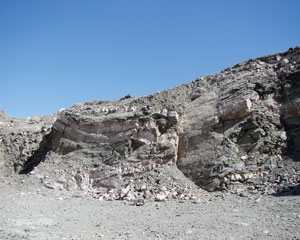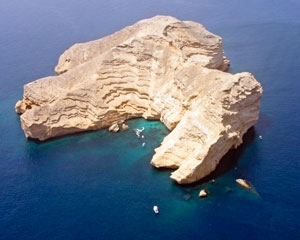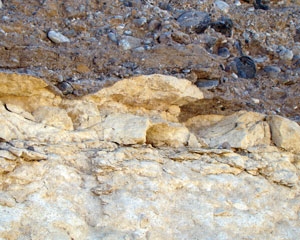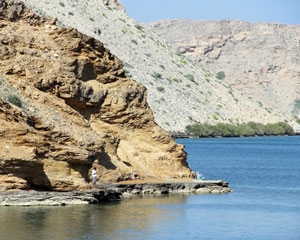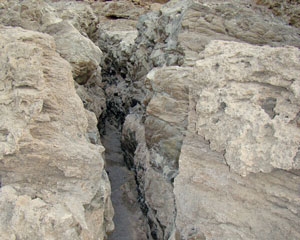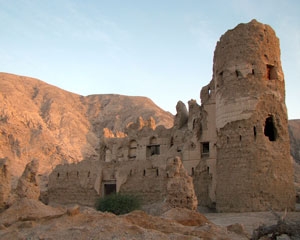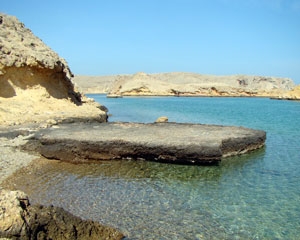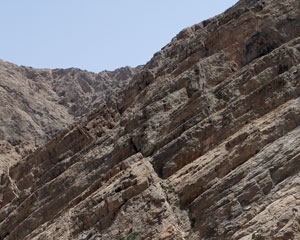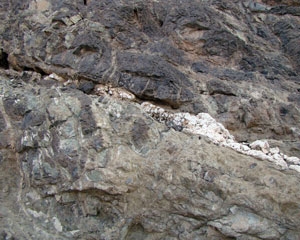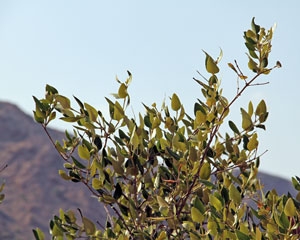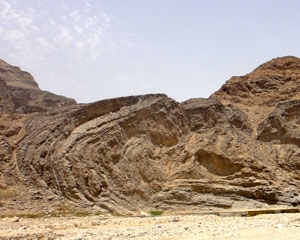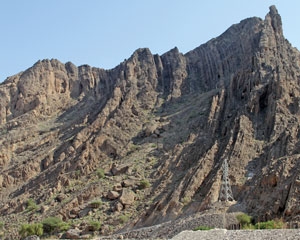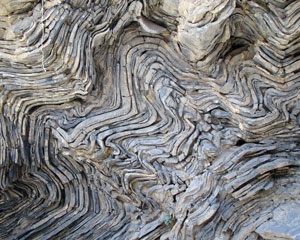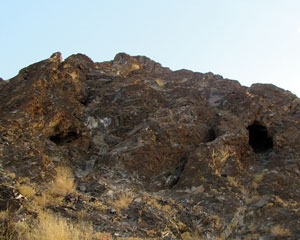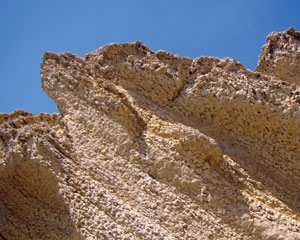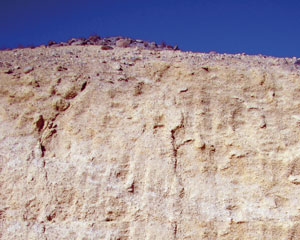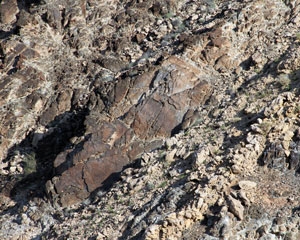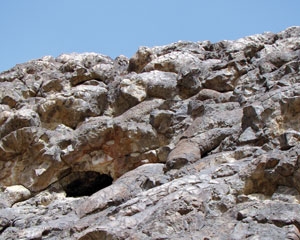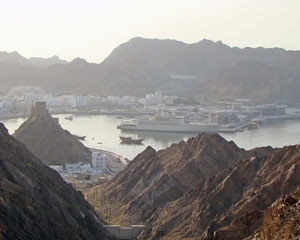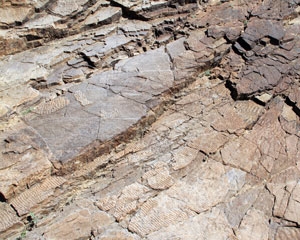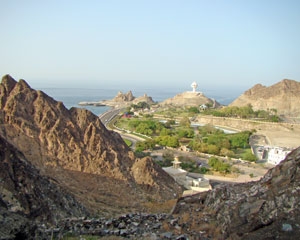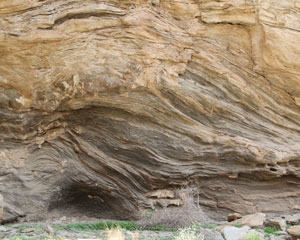The rock above is part of one of the most significant rock outcrops in Oman. This is the internationally renowned Samail Ophiolite. The story of the ‘landing’ of the Samail Ophiolite along Oman’s northern coastline began around 90 million years ago when a several kilometre thick slab of oceanic crust started to be slowly pushed over the top of Oman’s beachfronts. This unusual overthrusting or obduction of the sea floor occurred as a result of an initial spreading apart of the Arabian and Eurasian crustal plates, which commenced around 270 million years ago in an ocean called the Tethys to the north of Oman.
As the plates separated, the underlying mantle melted and pools of molten rock (magma chambers) welled up to fill the gap, then hardened to form new oceanic crust. Around 90 million years ago the plates started to converge. Normally under these circumstances, the heavier oceanic crust will slide beneath the continental crust. However in this case, the opposite occurred and for the next 20 million years, rocks originating from deep within the ocean were pushed hundreds of kilometres from the deep ocean floor onto Oman’s crustal plate. The rugged ophiolite hills around Muscat and those stretching hundreds of kilometres inland is the largest and best exposed fragment of oceanic lithosphere found on land in the world. (500 km long and up to 80 km wide).
Sultanate of Oman Culture
Oman Nature Reserves
Wadis in Oman
Caves of Oman
Deserts of Oman
Beaches in Oman
Oman Islands
Hot Water Springs in Oman
Beach Lagoons of Oman
Canyons in Oman
Muscat Geosites
- Al Awabi quartzite in Oman
- Al Fahal Island in Oman
- Al Jabal Al Aswad Oman
- Al Khoud Unconformity in Oman
- Al Khayran in OMAN
- Ayn Al Hammam Hot Spring in Oman
- Bawsher marble in Oman
- Coastal Erosion in Oman
- Concentric fold in Oman
- Intertidal ecosystem in Oman
- Jurassic bedding in Oman
- Limestone Fault in Oman
- Limestone landscape in Oman
- Magnesite veins in Oman
- Mangrove forest in Oman
- Mega fold in Oman
- Mega syncline in Oman
- Mini folds in Oman
- Mutrah Geotrail East in Oman
- Nodular Limestone in Oman
- Nummulites in Oman
- Ophiolite contact in Oman
- Ophiolite obduction in Oman
- Pillow lava in Oman
- Port View in Oman
- Ripple marks in Oman
- Riyam view in Oman
- Schist bedding in Oman


